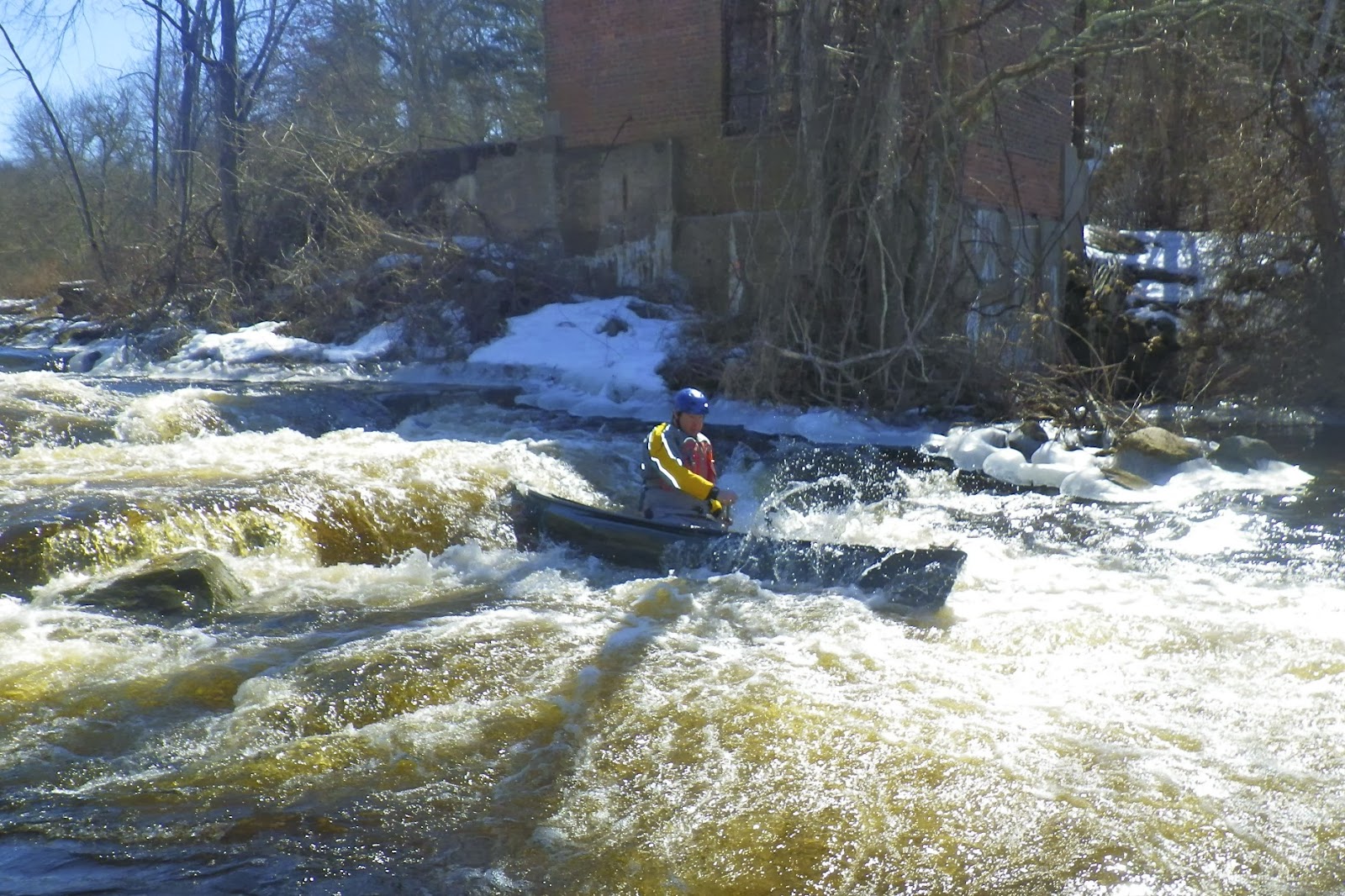 |
| Group picture at the put-in |
I didn’t know Jim O’Brien, but I knew of him. His boating skills were well above
mine, so we rarely crossed paths on the river, but he was a friend to many. It is a great testament to him that his
friends still gather to remember him four years after his tragic accident.
About forty-five boaters (including Andy, Duke, Mike and me)
gathered on the Knightville section of the Westfield for the Jim O’Brien
Memorial Paddle. It was a dam
release weekend, and the river was running between 600 and 700 cfs. – a
surprisingly fluid level. When Glenn Stewart offered to bring his Perception
Revolution, I jumped at the opportunity to paddle it with him.
 |
| Stand-up paddling the Revolution |
The Revolution is described in old Perception marketing materials as a cataraft that can bring whitewater paddling to anyone. It is simple to paddle, spins on a dime
and is amazingly stable. It is
maneuvered with only two strokes – forward and backward.
After a group picture at the put-in, we began our trek
downstream. The Revolution glided over
and around rocks, and rode waves easily.
As long as you keep the boat running straight downstream, about the only
thing that you can do wrong is get a rock stuck between the pontoons. It’s a lot of fun to paddle.
 |
| Andy running the Gorge Drop |
As we entered the Gorge section I was surprised to see ice
ledges lining the river. There are
two significant drops in the Gorge section. The first has easy haystacks on river right, and a narrow
tricky shoot on river left. Glenn
and I decided to take the route on river left. The river funnels between a mid-stream rock and the
bank. We made it down the drop
only to get pushed into the bank at the bottom. Fortunately, the ice ledge at the bottom was not
particularly large, but I still ended up with a nasty bruise on my leg.
The second drop in this section is known as the Gorge
Drop. The river is divided in the
middle by a large rock. The route
is to run just right of the rock, catching the eddy at the bottom if possible,
or at least moving left to avoid the large haystacks downstream. Glenn and I nailed it, and pulled into
the eddy to get some pictures of the rest of the crew coming through. Hopefully I’ll get to paddle the Revolution again this summer with Glenn on the Dryway.
 |
| Duke surfing in the Gorge Drop |
Links:











